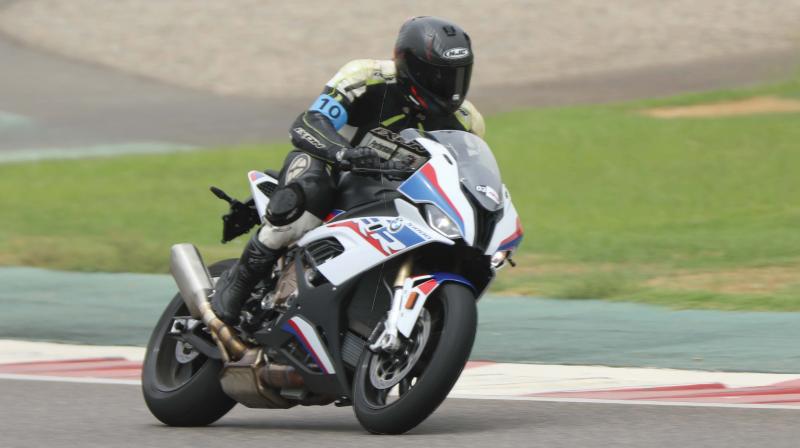Bike of Theseus

When BMW introduced its S1000RR motorcycle in 2009, it immediately became popular and a leading litre-class superbike in its segment. After all, it was the most powerful superbike and it took years for others to catch up. After a decade, BMW has launched its all-new S1000RR, which is the third generation of the motorcycle and not a single component on this one is shared with its predecessor. So when we got the chance to ride this 1000cc beast on the Buddh International Circuit, we were massively thrilled about it.
Design
The most notable change is the new headlamp design, so now the famously known asymmetrical design is out and, instead, the S1000RR gets a pair of sleek looking headlamps with LED DRLs. This new upgrade gives the motorcycle a sportier, sharper and meaner look. From the rear, the design is sharper and even though the wheelbase has been increased, for some strange reason, it looks shorter and feels slimmer. In fact, when you sit on the motorcycle, it feels more like a 600cc, which is a good thing as it makes the motorcycle more user-friendly and less scary.
So how much advanced is this motorcycle? Well, like all modern superbikes, the electronics suite on the S1000RR is what makes putting the power down. The electronics do all the hard work, help you go faster, lean harder and exit corners quicker, making you feel almost like a MotoGP rider.
Engine
The new 2019 BMW S1000RR continues to get power from the similar displacement 999cc, inline four-cylinder engine, but with an entirely new unit and it is four kilograms lighter. A 6-speed gearbox with a bi-directional quick-shifter carries out transmission duties. Its powerful engine is able to generate a maximum power of 207 hp along with the peak torque of 113 Nm. While the torque remains unchanged, the power figure sees an increment of 8 hp compared to the preceding model. The engine now gets BMW's ShiftCam Technology that offers better performance throughout the rev range.
Handling
Out on track, the first thing that is going to make an impression is its all-new suspension. BMW has moved to electronically controlled suspension from Marzocchi as opposed to Sachs earlier. The suspension offers impeccable control and stability, be it going full-throttle down the straights or high-speed cornering. Lesser dive and stability under braking give a boost to rider's confidence, as we managed to test it at the speed of over 270 km/h. The suspension adjusts damping in real time, depending on surface conditions, and as we can assume that the new bike is going to offer better ride quality even on the city road and highways.
Verdict
A full day on track, tucked behind the S1000RR, was fun but exhausting too. The older S1000RR was hard work and the new bike is less demanding, but is still a lot of work, if you want to get even remotely close to the limits of its immense potential. Like most current superbikes, the S1000RR will let you put its power down and ride it fast, just like that. But more importantly, BMW Motorrad has raised the bar once again, like it did a decade back. The overall package of power, stability, control, speed and technology is available with a price tag of Rs 18.50 lakh, while the Pro and Pro M Sport variants are priced at Rs 20.95 lakh and Rs 22.95 lakh. So, if you liked the old S1000RR for its violence and sharp handling, the new bike will only have you break into a bigger smile inside your helmet.

